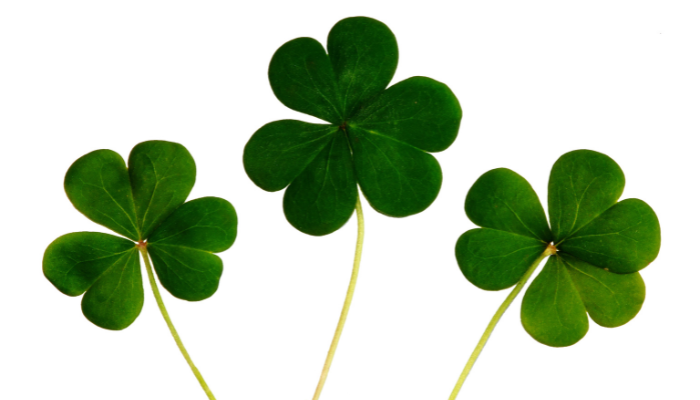17 March 2024
Shamrock, Irish Heritage and Biodiversity

The shamrock, a three-leafed clover, is a significant symbol associated with St. Patrick’s Day. Ivan Kelly discusses the shamrock’s significance in Irish culture and biodiversity, its role in St. Patrick’s Day traditions, and its ecological importance in supporting Ireland’s grassland ecosystems.
It is believed that St. Patrick used the shamrock to explain the concept of the Holy Trinity. By holding up a shamrock with its three leaves, he explained that, just as the shamrock has three distinct leaves but is still one plant, the Holy Trinity (the Father, the Son, and the Holy Spirit) consists of three distinct persons but is one divine being.
The name itself comes from the Irish ‘seamair óg’ which means young clover. Shamrock usually refers to either the species Trifolium dubium (lesser clover) or Trifolium repens (white clover).
An annual tradition at the White House that dates back to the 1950s put the shamrock (clover) front and centre of the St Patricks day celebrations. On March 17th, The Taoiseach of Ireland traditionally gifts a bowl of shamrocks to the President as a symbol of friendship and goodwill between Ireland and the United States.
From a biodiversity perspective, the shamrock and its associated clovers play a role in Ireland’s plant diversity. These clover species are native to Ireland and are found in various habitats, including meadows, fields, and grasslands. They are an integral part of Ireland’s grassland ecosystems and support pollinators such as bees, which play a crucial role in maintaining plant biodiversity and ecosystem health.
In grassland, white clover increases protein, mineral content, intake and nutrient value of the total forage. Because of its nitrogen fixing capacity, white clover has the potential to reduce, or in the case of organic systems, eliminate the need for inorganic nitrogen fertilizer on grazed grassland.
The tradition of wearing Shamrock on Saint Patrick’s Day can be traced back to the early 1700s. Beyond its cultural and symbolic significance on March 17th, the shamrock and its associated clovers have ecological importance, particularly within Ireland’s grassland ecosystems. They contribute to the nutritional value of forage, aid in nitrogen fixation, and provide resources for pollinators, ultimately supporting the health and sustainability of Ireland’s environment.
